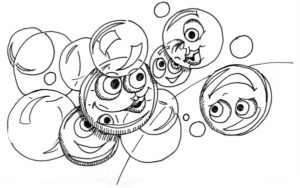Biopharmaceuticals, also called biologics, are recombinant therapeutic proteins, typically manufactured by mammalian cell culture or microbial expression systems. Monoclonal antibodies (mAbs), interleukins, human growth hormone are prominent examples. Some products are chemically modified to further modulate the pharmacodynamic properties. Biopharmaceuticals have a very complex structure, compared to synthetic pharmaceutical drugs, which can be crucial for the therapeutic effectiveness and patient safety. Accordingly, biotech and pharma companies rely on specialized analytical methods, such as Analytical Ultracentrifugation (AUC), for development and extended characterization in order to meet the requirements for regulatory submissions.

Protein Aggregates
Biopharmaceuticals and biologics, such as monoclonal antibodies (mAbs), fragment antibodies, interleukins ,and other recombinant proteins are valuable therapeutics, and thousands of further biologics are in clinical development. Due to their size, complex structure ,and potential conjugation with hydrophobic ligands, many products tend to form larger aggregates which can result in patient safety issues upon parenteral administration.
Orthogonal analytical methods, such as Analytical Ultracentrifugation (AUC) are a valuable tool to complement routine assays. [read more]
High-Concentration Formulations
Subcutaneous administration of biologics often results in lower cost and increased patient safety and convenience, especially in a self-administration setting via injection devices such as pens, auto-injectors or on-body-injectors. To deliver the appropriate dose, these drugs often require a high-concentration formulation, since the injection volume is much lower compared to an intravenous infusion. The same holds for many ophthalmology drugs: Injections into the eye ball require high purity and high concentration, since the injection volume is very limited.
Nanolytics offers a specific detector. [read more]


Biomolecular interactions
The detection and characterization of biomolecular interactions, in particular protein-protein and protein-ligand interactions as well as their formation dynamics and kinetics, are essential tasks in biochemical and pharmacological research.
AUC provides superb capabilities for analyzing and obtaining complex stoichiometries. [read more]
Conformation and size variants
In addition to self-association behavior (e.g. desired oligomerization), the conformational status of proteins and other biomolecules (e.g. denaturation, misfolded conformers) is crucial for understanding molecular functions and evaluate stability/safety/efficacy issues of drug products. Therefore, discriminating between size and conformation variants is an ubiquitous task in characterizing the size distribution of biomolecules in solution.
Nanolytics offers the most advanced instruments. [read more]


Biosimilars
As more patents on biological drugs expire, the market for generic copies of these products, referred to as „biosimilars“ or „biogenerics“, has been growing for years. „How similar is your biosimilar to the originator drug product?” is the crucial question to be answered, in order to receive authorization for its use. [read more]

